GameStick review
It's cheap and sort of cheerful, but does the Playjam GameStick deliver?
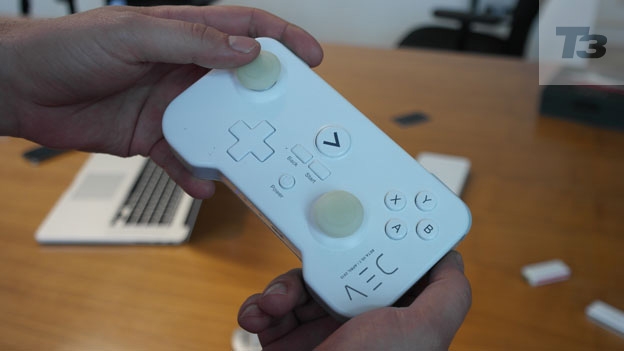
-
+
Portable and sturdy
-
+
Cheap games
-
-
Lack of really good titles
-
-
Laggy interface
-
-
Clumsy controller
Why you can trust T3

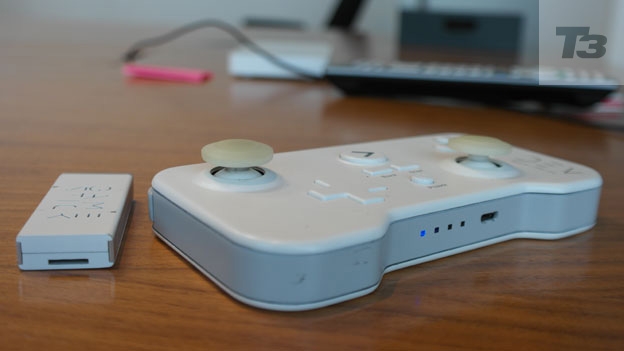
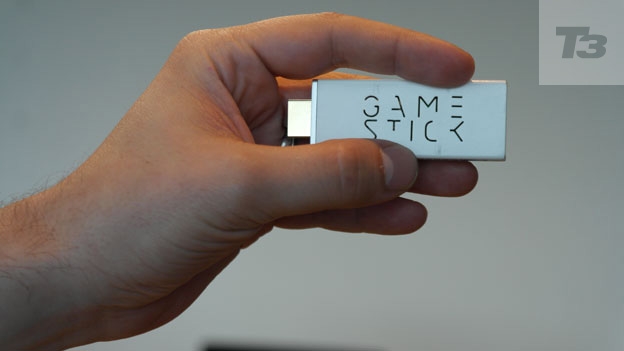

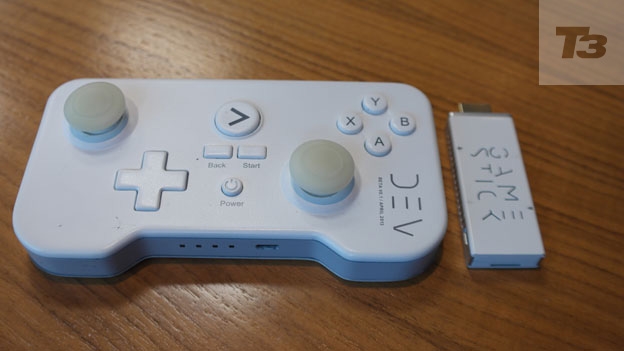

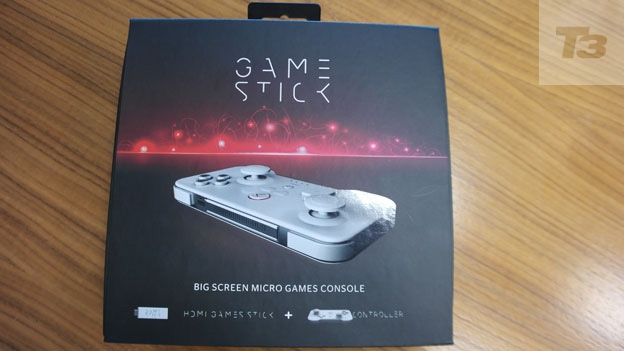
Building on the Kickstarter success of the Ouya, the GameStick is another Android-toting micro gaming system, but does it deserve a spot in your house?
Before the year is out, the next generation of the console wars will commence, with the PS4 and Xbox One going toe to toe for home console supremacy. However a new contender has recently joined these pricey behemoths, in the form of sub-£100 mini consoles running modified versions of the Android operating system.
Kicking off with the Kickstarter success of the Ouya, Android consoles have slowly become more common and the latest challenger, the GameStick from PlayJam, is about to make a play for victory.
While the Ouya was originally met with heaps of praise and positive reaction, when it actually ended up in the arms of the public it was almost universally slated. Likewise, the Archos GamePad didn't win too many fans although the Nvidia Shield proved a little more impressive.
So, can the GameStick, which comes in at £20 cheaper than the Ouya, right the wrongs of its competitor? Or is it doomed to follow the same path? Read on for the full verdict.
GameStick: Size and build
At about 3 inches long, the GameStick is truly dinky. Imagine a USB stick, or a Google Chromecast, and you're not that far off. Being so diminutive means it'll sit in the back of your HDTV without any trouble, leaving the rest of you home cinema set-up in peace.
Overall, the GameStick itself is really sturdy, with a soft-touch matte coating and a bevvy of tiny holes covering the surface. The HDMI plug sits at one end, with a Micro-USB port on the side and finally a Micro-SD card slot on the rear.
In a perfect world your HDTV will have a powered HDMI socket, allowing you to plug the GameStick in and get to work on downloading those Android games. Sadly a few of the TVs we tested it with lacked this, leaving us with a down right annoying job of using the included HDMI extender and Micro-USB cable to plug the GameStick into an external power supply.
Let's just say what you end up with a mass of cables and a slowly bobbing up and down console extending from an HDMI port. This is not necessarily a complaint at the console, just simply a warning that the clean and tidy set-up may not always be achievable.
Aside from the console itself, the other part of the package is of course the controller. The nifty thing is that because the GameStick is so small, it can safely slot inside the controller, leaving you with a portable package that will easily slip into your bag if you're heading off to a mate's house.
The pad itself is a plasticky block, rectangular in shape and with a slight dimple at the bottom. It's not particular pleasant to grip for long periods of time, digging into your palms and forcing your fingers to stay straight.
The thing that makes the PS3 and Xbox 360 (and PS4 and Xbox One) controllers so comfy is their contoured grips that fit so naturally into your hands, the GameStick lacks this completely.
GameStick: Features
Somehow stuffed into the tiny frame of the GameStick is an ARM Cortex A9 CPU, a Mali 400 GPU, Wi-Fi, Bluetooth and 8GB of storage, along with a heavily skinned version of Google's Android OS.
This is basically the internals of a low-to-mid range smartphone stripped out and packed into a tiny, HDMI spearheaded, shell.
While it may run Android, an unrecognisable form of Jelly Bean 4.2, there is no access to any of Google's apps or its Play Store. This means that if you've previously invested in games for your Samsung Galaxy S4 or HTC One, you won't be able to re-download them to play on the big screen.
After a straightforward and quick set-up process, where you create a GameStick account and connect to your home Wi-Fi network, you're greeted with the start screen. Looking a bit like the dashboard from an Xbox 360, the tiled interface features large game artwork and a few options for hunting down those all-important titles.
Navigating the menus is a laborious process. It's slow, very unresponsive and the lack of content displayed on screen at once means you're forever scrolling, frustratingly tapping the buttons in the hope of finding an appealing title.
Aside from the games, there's also a 'media' tab, which houses the GameStick Media Player. This relatively bare bones app lets you play files from either a USB drive or a Micro-SD card and it works as advertised. We've heard that support for XMBC - a rather decent media streaming app - is coming, though it's not available at the time of review.
It's clear that this isn't going to become your living room hub of activity, not unless there's support for a whole load of new services in the near future.
GameStick: Controller
As we mentioned earlier, the controller that houses the GameStick didn't blow us away. Button wise, the usual selection is present. There are two joysticks, which have a nice, smooth rotation, a really clicky d-pad and four face buttons.
You'll also find two triggers on the top; again, they offer nice feedback. We really like the rear of the controller; with its matte finish it feels soft and looks professional. However the front is a different story, coated in shiny plastic, it has that slimy feel and picks up oily residue and fingerprints too easily.
Pairing the controller, via Bluetooth, to the GameStick is simple, and you can buy extra pads for £34.99 if you wish.
When fully charged, the latency and sensitivity on the joypad was good, moving the sticks in ShadowGun portrayed the same movements on screen effectively and it worked well. As the juice wore down, however, things started to slip a bit and button presses didn't register as quickly as they once did.
For the types of games you're probably going to expect to play on the GameStick, short bursts of arcade shooters and the odd round of Ski Safari, it's perfectly acceptable, though, like Ouya before it, it doesn't live up to the ambitions we were promised by the developers.
GameStick: Games
The great thing about Android games - and their iOS counterparts for that matter - is just how perfectly they work on a smartphone. Whether youíre swiping, interacting with the touchscreen or using the device's accelerometer, mobile games are intrinsically different to titles found on conventional systems.
What the GameStick is trying to do is bring that mobile gaming experience to the big screen, and on the whole it isn't a natural fit.
First off is the lack of actual games you'll want to play. Scrolling through the app store brings up a couple of familiar titles, Shadow Gun for instance, a Gear of Wars-esque third person shooter that has been around on smartphones for a few years now.
Get all the latest news, reviews, deals and buying guides on gorgeous tech, home and active products from the T3 experts
Headlining a brand-new system with a game released in 2011 is not a good move - especially when it caused severe frame-rate drops.
Ski Safari, another great mobile game is available too, but playing it on the TV just doesn't work. It's made for short bursts of gaming with a touchscreen, moving it to 40-inch display and controlling it with a joypad just takes all the fun out of it. After about 10 minutes we were bored.
That in itself it the second major flaw to the system, the games offered nothing to keep us coming back for more, they were instantly forgettable.
A few of the lesser known titles, Fist of Awesome for example, are quite fun, but, again, they lacked anything to make the purchase of a GameStick worth it.
One positive though is that the games are cheap, with most seeming to sit between £2 and £3, though unlike on the Ouya, you don't always get to try before you buy.
GameStick: Verdict
There's no doubt the pitch sounds great. A complete gaming system that slips inside your bag and costs less than £80 seems like a deal that should be snapped up. The truth is that is that this isn't it.
The GameStick is well built, with a passable controller and some cheap games to download, but it offers nothing that will keep you coming back day after day, game after game. This is just simply a product category that doesn't need to exist, especially when both the Xbox 360 and Playstation 3 are available for not that much more cash.
Maybe, if there was access to the Google Play store and the odd AAA title that we could really get our teeth into, the GameStick could have a place in our gaming set-up, but until then it will just be another gimmicky product. Let the mobile games stay on the smartphone, where they belong.
GameStick release date: 29 October 2013
GameStick price: £79.99